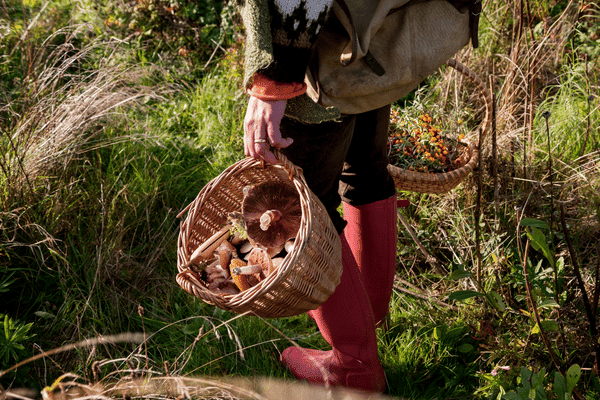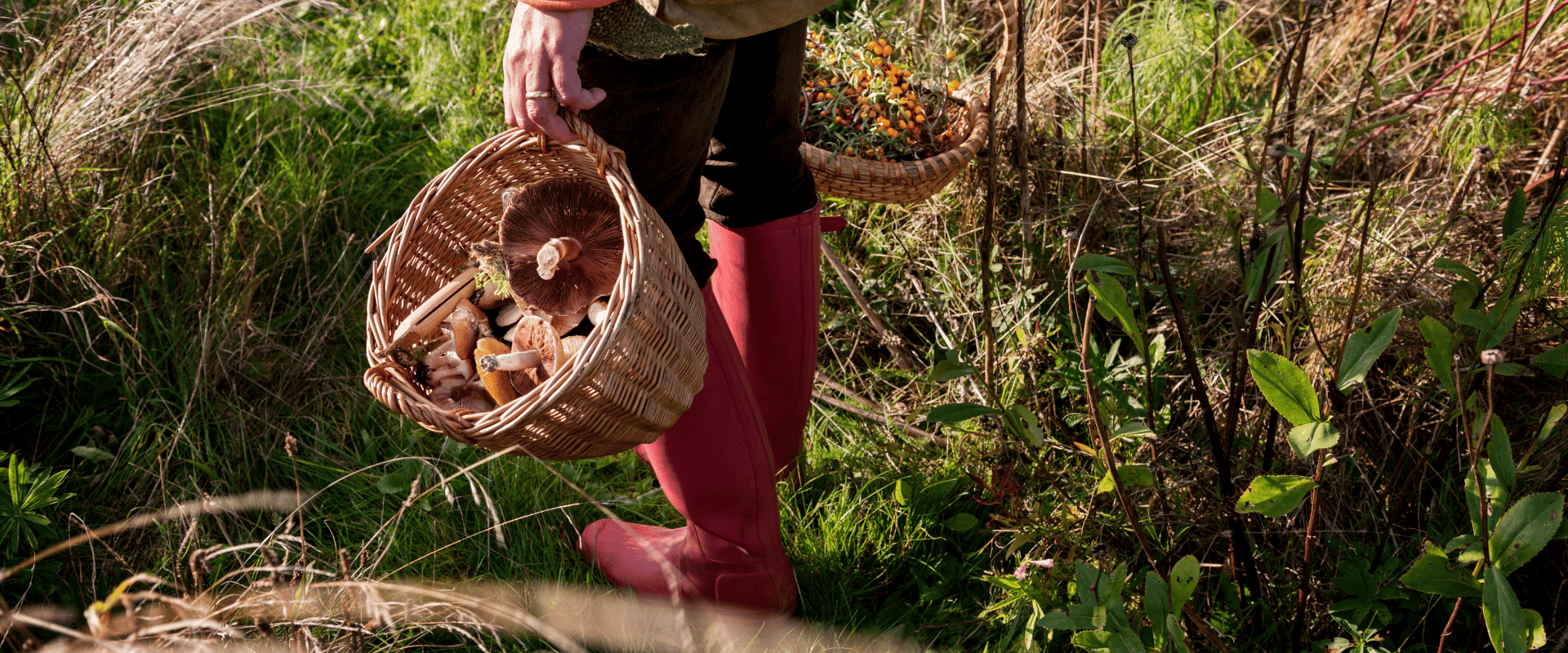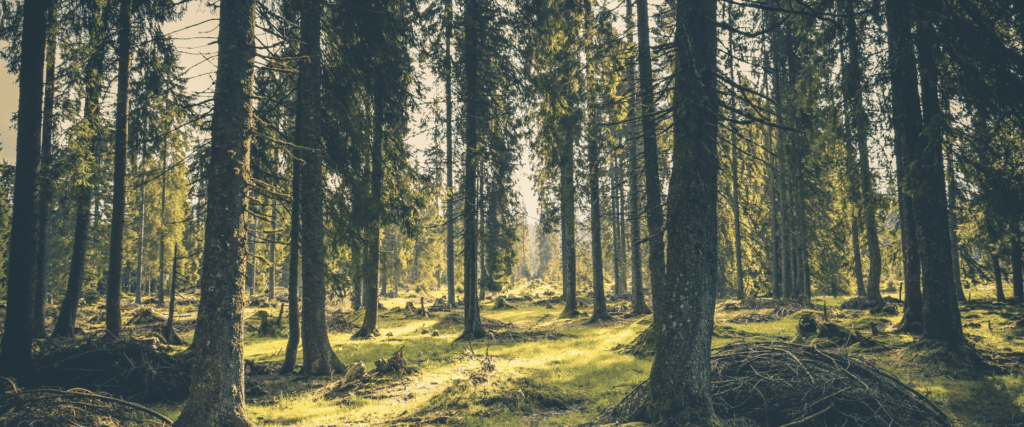
Game On returns to find the next top game chef
This year students are challenged to create a starter using either venison loin or shoulder.
Get information on the legal shooting season for mammals and birds in the UK.
Learn about our current conservation projects and how you can get involved.
Comprehensive information and advice from our specialist firearms team.
Everything you need to know about shotgun, rifle and airgun ammunition.
Find our up-to-date information, advice and links to government resources.
Everything you need to know on firearms law and licensing.
All the latest news and advice on general licences and how they affect you.


The countryside is brimming with wild edibles, many of which pair wonderfully with game. Marlow Renton from Wild Food UK considers half a dozen oft-overlooked treats, and BASC wild food officer Matt Gisby shares some tips on how to cook them. This article first appeared in the September/October edition of Shooting & Conservation magazine.
Foraging is a fantastic skill to have. Not only will it make your food bills a little bit cheaper and introduce you to new flavours, it will also help you learn more about the natural environment. It is good for the mind, body and general wellbeing, too; you have to go for a walk, you have to use your senses and you will normally be in relaxing outdoor spaces. What’s more, when you get the foraging bug, every walk becomes a treasure hunt.
There are a few rules to follow, though. First and most foremost, never eat anything unless you are 100 per cent sure what it is. This not only applies to mushrooms but also plants and even fruit; there are more poisonous plants in the UK than there are poisonous fungi.
The second rule is that we leave everywhere as we find it, minus a few leaves and mushrooms. We do not damage other plants to get to our foraged finds and we always leave at least half of what we find behind. The Wildlife and Countryside Act (1981) also states that you must not uproot any plants from common or public access land. And you must not forage on private land without permission of the landowner or occupier.
Third, gauge the environment you are picking from and try to only pick from areas that you consider clean or unpolluted. And fourth, never let slip where your chanterelle spots are!
Almost any time you are outside you are likely to find some wild edibles if you know what you are looking for. Many edible fruits and plants will happily grow in urban areas, but the countryside is where you find the real treats.
Some of the highlights for late summer and autumn are explored on the following pages. All of these species grow across the country and are considered common.
One of our most overlooked autumn fruits is the humble damson. Used for making jams and conserves that go well with almost any gamey meat, you can also use them to make damson gin, damson vodka and damson wine – all of which go great with any meal.
There are numerous types of damsons in the UK and many hybrids with our native sloe, too. It’s always worth having a taste and judging their flavour and what best to do with them as the sloe hybrids will always be a bit more sour.
Identification: Dark green, shiny and oval-shaped leaves have a serrated edge. The fruit is a dark blue/black with a thin white bloom.
Matt’s cooking tips: Sauces, jellies, jams and pickles can all be made from damsons. Damson gin has been a staple in the countryside forever, but in the kitchen they add an amazing depth to sauces.
They require destoning and then cooking in a sugar syrup to get them tasting their best. Gently poaching for about five minutes gives you fruit and liquid that is perfect for any red wine sauce served with game. Particularly good with grouse, venison or pigeon and roasted beetroot to make a tasty, colourful dish.
This famous mushroom is actually quite common in British woodland if you know what to look out for. It likes to grow in mossy woodland and can be found most often with beech and birch trees. It has a lovely, sweet flavour, sometimes likened to that of apricots, and a nice firm texture. It is rarely spoiled by flies and their maggots as it contains a natural insecticide.
Identification: A yellow stem that is solid and tapers towards the base, with white flesh upon cutting. Chanterelles have forked, slightly rounded folds that look like gills. These run part way down the stem.
Matt’s cooking tips: Chanterelles are one of the finest wild mushrooms; they command a high price and are loved by chefs around the world. Best fresh or dried rather than frozen for later use, they work well sauteed quickly with garlic and thyme and added to a cream sauce. A perfect late-autumn dish would be creamy chanterelles on sourdough toast with a pan-fried partridge breast and some crispy bacon.
Often sold as ‘maitake’, this mushroom grows at the base of oak trees and has no poisonous lookalikes. It also has a firm, meaty texture and a strong mushroom flavour. If you find a small specimen of Hen of the woods, leave it to grow for a little while as the fruiting bodies can often end up kilos in weight when more mature.
Identification: Tier-like clusters of wavy- edged grey-brown caps that can grow quite large and end up more tan-brown. Hen of the woods has many small pores on the white underside of the cap, although spore-bearing patches can appear on the top of the cap surface.
Matt’s cooking tips: Although perfectly suited to quick frying and grilling, this fungus works well as a dried mushroom for later use. A delicious late-season dish can be made by poaching older pheasants with stock, vegetables and dried mushrooms to form a broth. Shred the pheasant meat into the broth and add noodles, bok choi and coriander, then serve with a range of pickled chillies and Asian sauces to give you a ‘forager’s pho’.
This common plant grows in most woodlands in the UK and has a surprisingly punchy flavour. It tends to favour woodland floors or hedgerows that are shady, damp and undisturbed. The leaves ‘wilt’ or close at night or if conditions are harsh. When you find this plant, have a nibble and make sure you eat the stem, too, as it has more flavour than the leaves. You will be amazed at how strong the taste of sweet lemon and apple peel is.
Identification: Wood sorrel is very easy to recognise as it looks very much like clover. But unlike clover, which has oval leaves, the three leaves are heart-shaped. The stems are thin, delicate and green to red in colour.
Matt’s cooking tips: Wood sorrel has a tang and acidity that enlivens dishes. Also well-known as a good hangover cure when eaten fresh, it can lift soups, sauces and dressings. A genuine year-round forager’s find, it is best in a pesto mixed with spinach, cheese and nuts and drizzled over venison straight from the grill. Added at the last minute, it can also help enliven a cream sauce – this would work particularly well with a mustard sauce served with pheasant or partridge.

This is an abundant plant that everyone should know about. It makes up the bulk of most of our salads throughout the year and can be found in all parts of the country – mostly in grassy areas, but also in open rides through woodland. It is easy to deal with; the whole plant tastes good, and even the stems are succulent and juicy.
Identification: The best thing about chickweed is that it has a key identifier that makes it impossible to confuse with other similar-looking species. If you look closely at the stem of true common chickweed, you will find that it has a ‘mohican’ of hairs down one side of the stem. If you can see that mohican then you know you’ve got chickweed, and once you’ve found it once you will start to see it everywhere! Use it liberally as a salad leaf and garnish.
Matt’s cooking tips: Chickweed is best eaten fresh and cooked quickly. It is a useful addition to a quick stir-fry using any game meat and can be eaten raw, so only needs to be added at the end. The flowers are also beautiful to garnish a warm salad – an autumn partridge, pear and walnut salad could be enhanced by using some chickweed as the leaf and adding the pretty flowers to decorate.
This plant is around all year and is the reason I have not bought cloves for my whole adult life. You will likely have it in your garden – it is that common. The roots have exactly the same aromatic and tasty chemical in them as cloves, so though they are a bit milder they have exactly the same flavour, too.
Identification: The plant is easy to recognise, as it looks a little like a strawberry but has opposing leaflets running down the stem. Wood avens flower between May and August and have five bright yellow petals. The seeds are in the form of a burr which you have probably found attached to your trousers, socks and dog after a woodland walk.
Matt’s cooking tips: It is best to use the roots rather than the leaves for your cookery of wood avens – a unique-flavoured spice comes from the root that is perfect steeped in vodka or gin. For cookery it is best dried and then used as a dry spice or rub when making game curries – think spiced pigeon biryani. Wood avens can also be used in pilaf rice as an accompaniment.
The best way to learn how to forage safely is to go on a course. It’s amazing what you can learn in just a couple of hours if you are being taught by a professional. Then stick to what you know with regards to picking and try to learn a new species or two every time you go out. Keep your eyes peeled on your walks and take photos of things you don’t recognise. Then it’s a case of getting the right books and using the internet to help you find out what they are.
Once you have found something you particularly like, remember when and where you have found it and you’re likely to find it again in the same spot each year.

This year students are challenged to create a starter using either venison loin or shoulder.

We have all heard the myths around the best type of grouse to eat so we decided to put the theories to the test with a grouse tasting event.

Today sees the launch of the new Eat Game Podcast, marking the start of Great British Game Week 2021.
Sign up to our weekly newsletter and get all the latest updates straight to your inbox.
© 2023 British Association for Shooting and Conservation. Registered Office: Marford Mill, Rossett, Wrexham, LL12 0HL – Registered Society No: 28488R. BASC is a trading name of the British Association for Shooting and Conservation Limited which is authorised and regulated by the Financial Conduct Authority (FCA) under firm reference number 311937.
If you have any questions or complaints about your BASC membership insurance cover, please email us. More information about resolving complaints can be found on the FCA website or on the EU ODR platform.
This website uses cookies so that we can provide you with the best user experience possible. Cookie information is stored in your browser and performs functions such as recognising you when you return to our website and helping our team to understand which sections of the website you find most interesting and useful.
Strictly Necessary Cookie should be enabled at all times so that we can save your preferences for cookie settings.
If you disable this cookie, we will not be able to save your preferences. This means that every time you visit this website you will need to enable or disable cookies again.
This website uses Google Analytics to collect anonymous information such as the number of visitors to the site, and the most popular pages.
Keeping this cookie enabled helps us to improve our website.
Please enable Strictly Necessary Cookies first so that we can save your preferences!
More information about our Cookie Policy